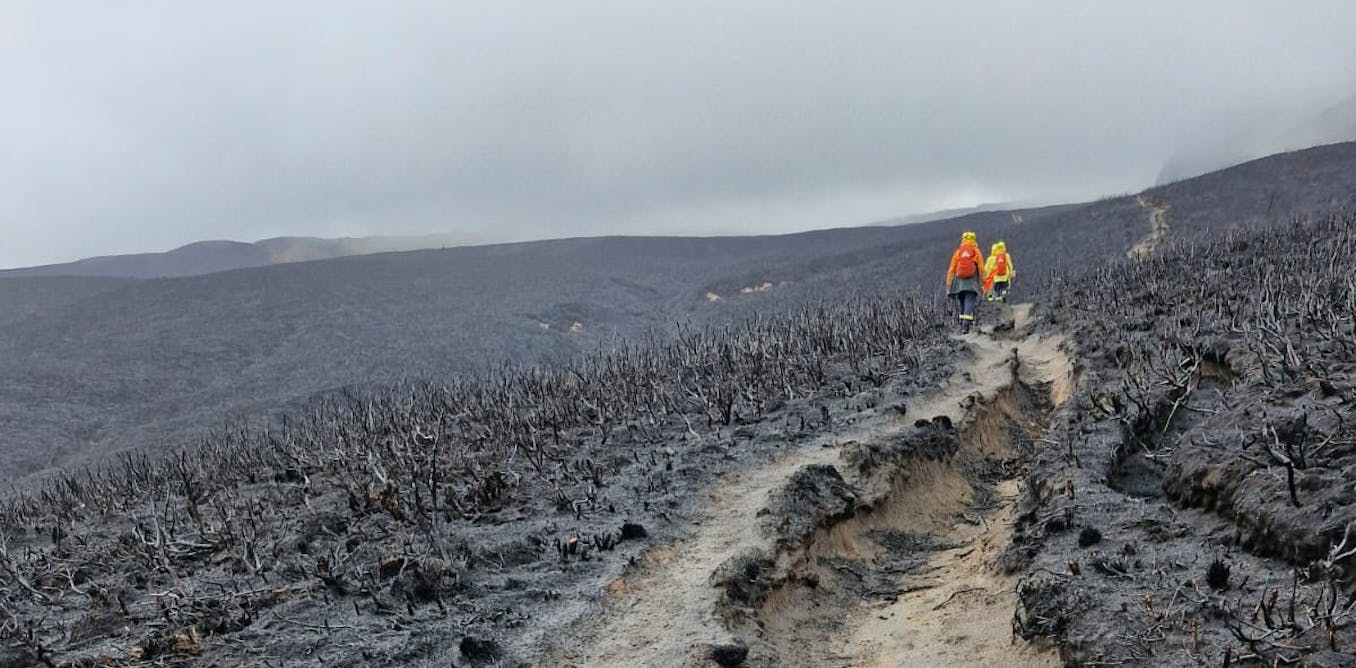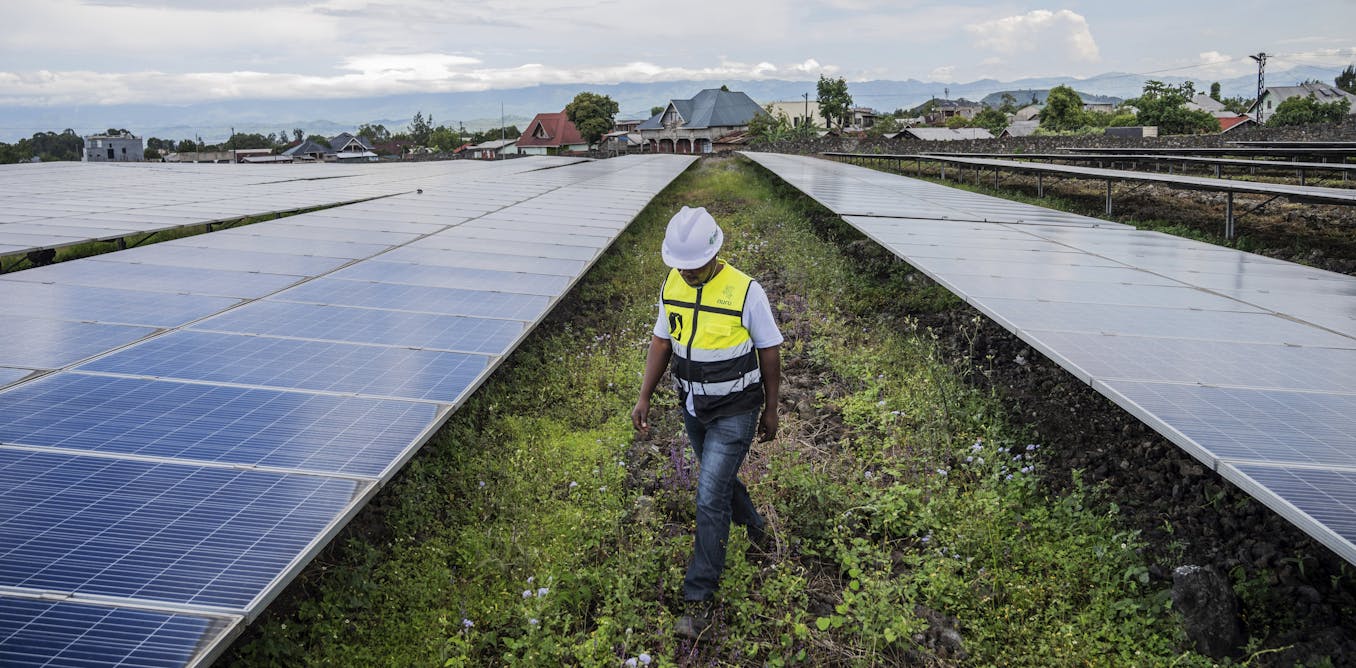need to live in space, including air, food, and water. In this full episode of Superstructures, National Geographic takes viewers on an epic journey to uncover the engineering secrets of the International Space Station.
From revealing the challenges faced by engineers to get the ISS into space, to uncovering the intricacies of the modules and laboratories that make up this extraordinary feat of human engineering, viewers will gain a new understanding of what it takes for humans to live in space.
Costing an astonishing $150 billion, the ISS represents the ultimate extreme home in a space where human beings were not meant to live. The video reveals how engineers had to figure out how to make systems that provide all the functions Earth provides in a tiny can, and showcases the incredible international effort behind launching and assembling the ISS, as well as the ongoing need for life support in space.
The episode also dives into the challenges of providing air, food, and water to astronauts while living on the ISS, and examines the staggering scale of the space station, which is so vast that it can be seen from Earth with a good pair of binoculars.
For anyone fascinated by space exploration and the incredible feat of engineering that is the International Space Station, this full episode of Superstructures is a must-watch. It provides a unique and informative look at the ISS, shedding light on the groundbreaking innovations that have allowed humans to live and work in space for extended periods of time.
Watch the video by National Geographic
The International Space Station is the ultimate extreme home space is an environment where human beings were not meant to live the most expensive structure humans have ever built here in the most inhospitable environment known to man The only reason we can go there is by taking technology to provide us with everything
That we need in order to stay alive with no air food or water 250 Mi above the Earth it’s an epic engineering challenge we as Engineers are having to figure out how to make systems that provide all those functions that Earth provides in a tiny little can
To reveal how the engineers pulled it off we’re going to take it apart and uncover what’s going on inside how the International Space Station and its superstructure Secrets will help our species reach other planets and Beyond costing up to an astonishing $150 billion this is an unprecedented home the ISS is an extraordinary feat of engineering because not only do you have to make this big environment that people can live in which you you know is non-trivial to do on Earth you have to do it in
Space it comprises millions of high-tech components There are 16 pressurized modules with living quarters sleeping Bays an observation deck and six science labs all connected via airtight tunnels there’s plenty of parking for visitors including spots reserved for Russian soou capsules and the iss’s lifeboats which are on permanent standby in case of Emergency unlike any other structure the ISS has to provide everything its astronauts need if it fails they die a human being can only survive for 3 weeks without food 3 days without water and 3 minutes without air for Humanity to successfully Venture well away from Earth astronauts will need to be
Self-sufficient if the ISS can solve the challenges it will prove humans can truly live in space but before anyone can take up residence the engineers behind the ISS had to get it into space and it weighs a colossal 460 tons the same as about 300 cars it would be
Great if we could just build the International Space Station on the earth and then just blast it into space you couldn’t just fly the whole thing up there in one one shot you had to take a piece at a time and assemble it together like Lego the ISS began life as just two
Modules that had to be connected in space one built by America and the other by Russia the first flight actually launched in November of 1998 hadn’t been that long since the end of Communism in Russia and here we were building a joint Russian us space station so just the political Milestone that that represented um was pretty significant after the intense competition of the Space Race it’s suddenly all about collaboration the orbiting Russian
Module is known as Zaria which means Sunrise next the first American module known as Unity sets off inside the cargo bay of space shuttle Endeavor lift off of the Space Shuttle Endeavor Unity is now chasing zarya through space at more than 177,000 mph two modules from two superpowers are
About to dock first thing we have to do is to open up the pale bay doors can you imagine how important it is for these two modules to to M unfortunately before both modules were launched Engineers spotted a problem not all the pieces got to be integrated on the ground before they were
Launched neither neither zarya nor Unity were originally designed for the ISS their docking systems wouldn’t fit together the Russian hatches are all round and our hatches are all square I mean this is fundamental to the International Space Station and what you have are two things that don’t make and so what do you
Do well you make an adapto Lego block connector thing the L-shaped Lego thing they came up with with is called the pressurized mating adapter or PMA not only does this accommodate the different shaped hatches it also has a Precision engineered docking ring for grabbing hold of another module and perfectly aligning
It vital if a reliable air lock is to be made this is the moment of truth latches on the inside of the docking ring finally make the connection and pull the modules together here an Endeavor we have capture of zarya the International Space Station is
Born it was amazing I mean here we are we got Airborne we had unity in the bay and when we left we left a functioning space station ready for the next module to come up in the 20 years that follow Engineers from all around the world join the project building their own space
Laboratories and bigger living quarters but every one of the modules was constructed on Earth and it takes a Supreme International effort to launch them all successfully into space took a long time to build space station we have to fly everything up we have to connect all the modules put them
Together so that took over 40 missions modules came from all over the world we have the US modules from NASA we have the Russian modules we have the Japanese modules and the European module you name it and it costs around $10,000 to send every pound of weight up here from Earth
So right now we’re in the Japanese laboratory it’s one laboratory out of many here on the International Space Station this is Columbus the European module it has science experiments all over you could see it looks a little bit crowded here we are in the US laboratory again this is a laboratory with science
Experience on all of the walls here we’re going into the Russian segment be ready you don’t need a passport either and what’s cool about this module it is actually the very first piece of the space station that came up in 1998 it’s been occupied continuously
Ever since then so if you think for 18 years there has always been a human presence in space today the ISS is enormous by far the largest space station ever Created it’s actually big enough if you have a good pair of binoculars and when it’s flying over right overhead uh you can actually see it normally you look at a satellite and it’s just a little dot but the the ISS is big enough that you can actually see it as an extended object Check it’s so vast in fact that it would dwarf Time Square at an astonishing 357 by 240 ft it has more living space than a five-bedroom home but the larger the International Space Station becomes the larger a very obvious issue becomes too air in space there is
None it doesn’t provide um a life support system for US Air oxygen and so if we have uh a home in space we need to provide all of that the average adult breathes close to 4,000 gallons of air per day with a crew that can be up to nine
The ISS must Supply a huge amount of it and it’s not coming from outside those window Windows cruising outside the Earth’s atmosphere the International Space Station has to provide everything the astronauts need to live and breathable air is first on the list their very survival really depends on
The things that we provide them and you’re also having to deal with the fact that at any point in time if one of your system fails you have a very limited amount of time to either get something from Earth or to get back to Earth as quickly as you
Can in a crisis an emergency supply of oxygen can be sent up by rocket 4 3 2 with technological advances spacecraft can now Rendevous with the ISS in 6 hours if everything goes as Planned but even when a cargo delivery is successful there’s a price to pay the cost of each mission is colossal almost $200 million it’s expensive to bring a kilogram of anything up to the space station and to spend all that money just to bring up water and oxygen would be an
Incredible waste the ISS needs to make its own air the oxygen on the ISS can come from um a delivery from Earth and then they’re stored in tanks but the ISS is also capable of of generating oxygen on board on Earth we take air for granted in space each astronaut must be
Supplied with 1.85 lbs of oxygen per day 365 days a year to avoid suffocating in the very heart of the ISS is an unassuming machine about the size of a trash can it’s this that holds the secret to keeping AST auts alive incredibly it generates oxygen from nothing more than water so what
Happens is you have some water you uh feed some electricity through that water and the electricity will split that water into hydrogen and oxygen the oxygen comes off as Bubbles at the positive electrode the hydrogen at the negative but again being in space turns something that’s straightforward on
Earth into a major engineering challenge the bubbles of gas won’t come out of the water in your high school chemistry lab the uh the gas just bubbles up to the surface because the gas is lighter than the water and therefore it goes up gas is not lighter than liquid in space
Because gas doesn’t have any weight and liquid doesn’t have any weight so you produce gas bubbles and they just sit there and what we generally do is we we centrifuge it so you spin it all around and the liquid being denser it doesn’t weigh anymore but it still has mass so
It’s denser and it goes to the outside and you can then separate the liquid from the gas the hydrogen gets thrown away gets pumped into space and the oxygen is used for the ISS Air Supply there’s enough capacity on board to generate 5 to 20 lbs of oxygen a
Day more than enough for for the crew in the extreme environment of space making air is just the first challenge the ISS has to keep it but it’s under constant threat of a breach in its hole there is so much space junk up there now there’s the potential for it
To puncture the outer wall of space station I was taking pictures out one of the windows and it was a nice Clear Window I came back sometime later to take another picture and there was a great big ding in the window about a a 5/8 of an inch
In diameter from a microm meteorite impact and we had to take pictures closeup pictures send it down to the ground and it had to be analyzed to see whether it was going to be a threat when we entered if you pop a hole in space station the atmosphere is going to leave
Very very quickly no atmosphere means no oxygen and the consequences of that are obvious so how does the ISS deal with the threat of colliding with Meteorites the International Space Station is the largest man-made object that’s ever orbited the Earth and it’s racing around our planet at 5 m a second but on board that’s hard to appreciate how do we sense speed if you’re in a car for instance you know
You you have the road noise you have the wind going by you have Billboards or trees going by your window none of that exists in Space the only way you get a visceral sense of how fast I was going is you know you’re going over the Pacific Ocean
And then 10 minutes later you fly over New York and then 10 minutes after after that you’re flying over London if the ISS was orbiting closer to Earth we’d all see how terrifying its speed is it would cross the US from coast to coast in just 10 minutes lapping the Earth more than
5,500 times a year it’s actually traveling at 26,000 km per hour or 17,500 miles per hour so definitely be breaking the speed limit right speed on Earth can be incredibly dangerous but in space at the velocity the ISS hurdles the consequences of a collision can be off the scale
Catastrophic space debris is going by you at about 5 miles a second so if there’s a big piece of debris that happens to have your number on it it’s moving so fast you’d never see it March 23rd 2012 Mission Control radios the crew and uh have a velocity any idea
Checking something is heading straight for the space station the time of closest approach of this fragment of space debris is 11 minutes from now no one knows how big this object is of the station well you you do what you’re trained to do and and even though
You got woken up in the we hours of the morning you know what the reason is the crew must prepare the space station for impact can you see Yeah yeah you go through you close every single hatch on station which takes about 45 minutes yeah that’s from which direction yeah we don’t know the hatches can withstand a sudden loss of pressure that would come from the hull being breached coming up on the 6 Minute
Mark if there is a puncture any loss of air could lead to a serious emergency coming up on the 3 minute Mark until the time of closest approach the crew takes no chances they head for the Escape Vehicles we floated into our soy used spacecraft uh with initial preparations for
Undocking if space station were to be hit one minute from PCA and you just kind of hunker down and hope it doesn’t hit you and you just sit there and wait looks like that’s it fortunately this time it’s a near Miss but the ISS cannot rely on luck the
International Space Station is designed to work in the low earth orbit which is full of space debris a lot of space junk is is human-made you know they are things that that we have put up there satellit largely NASA has identified more than half a million orbiting objects that
Could pose a risk to the Integrity of the Space Station’s Hall luckily most of the stuff that’s big enough to hurt us we can track there are a few objects up there which are too small really to be tracked well but they’re big enough to do damage the ISS
Is constantly bombarded most of the debris is Tiny But even a halfin Fleck of paint could inflict the same damage as a motorcycle crashing at 60 MPH to be a viable home the ISS has to be able to take the hit without losing all its air the ISS basically has a bulletproof
Vest so just like a bulletproof vest which has different layers of Kevlar that that can rip as a bullet enters it the ISS has different layers in its outer skin the space station skin is known as Whipple Shield the outer wall is made from a thin sheet of aluminum less than 1/10th
Of an inch thick beyond that is a blanket of woven material and a further thin wall of aluminum it seems too delicate to protect the ISS from a direct hit it turns out that a solid piece of metal does not offer as much protective power as if you cut that metal into very
Thin sheets spread them out a little bit when there’s an impact with a high-speed microm meteoroid it hits the outer wall of the ISS and pulverizes some fragments pass through the first layer of aluminum which disperses some of the energy then there are layers of Kevlar and Nexel a ceramic fiber that’s
Stronger than some metals as the fragments hit this blanket they break up even more and don’t have enough energy to penetrate the hull it’s kind of counterintuitive when you think about it you know that a whole bunch of sheets of of aluminum foil uh could somehow give you more
Protection than than putting them all together uh but that’s the way it is in in Space the Whipple Shield has protected the space station from micrometeoroids for over 20 years but it’s ineffective against anything larger if a large object on a potential Collision Course is identified the only
Option is to move the whole ISS out of its way space command monitors most of the space debris that is out in orbit they notify our mission control here at Nasa we look at that and we have a green zone a yellow zone a Red Zone objects that fall within the Red
Zone have a one in 10,000 chance of hitting the ISS too dangerous to ignore if we think that something is coming within the Red Zone the space station can adjust its orbit and give itself a little boost to get out of the way small thrusters change the iss’s trajectory but using them is
Expensive now these thrusters you can think of them almost like tiny rockets and those Rockets are using propellant and that propellant isn’t infinite it all has to be set up from Earth at a cost of 10,000 ,000 per pound of propellant this brings Engineers face to face with the greatest challenge of all
How to reduce the station’s Reliance on Earth the ISS can’t be self-sufficient if it relies on thrusters to move but a clever trick hidden at its Center means it doesn’t have to the International Space Station has a problem it orbits the earth every 90 minutes and has to be regularly
Reoriented using thrusters is one option but that uses a precious propellant with the space station if here’s the Earth we we want to keep the station usually I mean there are sometimes exceptions but usually you want to to keep the station in the same relative orientation towards the Earth
So that the Copa is looking down at the Earth and in order to do that of course the space station is going to be rotating once every orbit around the Earth what the ISS needs is a way to move that doesn’t use propellant the solution for keeping the
ISS in the right altitude and also on track um in direction is to use gyroscopes this is one of the iss’s most Innovative Secrets at the center of the sprawling space lab there’s a quartet of small casings each about the size of a small cupboard they’re known as control moment gyroscopes or
Cmgs but how can they move a beast the size of a football field they’re really really clever in that you can change the attitude of station without firing any thrusters the four cmgs are mounted on a truss near the very core of the ISS inside each casing is a Flywheel spinning at 6,600
RPM the flywheels create a lot of angular momentum and simply by changing the RPM or tilting the plane they spin in they transfer that momentum to the ISS and the whole thing moves if I were sitting here in a chair and I had a gyroscope spinning around in
This direction and all of a sudden I put a break on and slowed down the gyroscope the chair would start to spin around you know I would slow the gyroscope around and then woo I would do a big spin because that angular momentum has to be conserved so these four controlled moment gyroscopes
Can move the whole of the International Space Station and there is not one single drop of propellant used in order to make that movement but they do use electricity as does just about every piece of equipment on board to supply the iss’s total power requirement a whopping 75 to 90 KW
Engineers cleverly exploit the Ferocious power of the Sun the station generates all its electricity for free the solar panels on the space station are absolutely essential cuz they provide all of the power that the station needs the panels have to be enormous which would have made them impossible to transport had
NASA Engineers not come up with a genius way to get them into space what’s really impressive about the solar panels not least their size you know around half an acre per array but the fact that they are actually folded and then once they’re in space they were able to be
Unfolded now that’s an amazing thing to do in space together they can generate 120 KW ample for all the iss’s needs and the equivalent of powering 40 homes in order to maximize the power you’re getting you you have to keep the solar panels continually pointed at the sun
Which means as the station is moving the panels have to turn and so we have gimbals if there a solar panel we can gimbal this direction and then we can gimbal this Direction one of the iss’s greatest engineering triumphs it’s been generating its own power for over 177,000 hours and
Counting that enables round-the-clock air conditioning fundamental to astronaut survival this cannot go down it’s not like a power cut in our homes where you know we can get a torch or light a candle or something if this goes down astronauts will Die when the ISS enters the shadow behind the Earth the temperature can drop to below anything ever experienced on our planet without the protective Cocoon of the space station the Ferocious cold would kill astronauts in a matter of moments conversely when in sunlight the temperature can soar temperature and
Managing temperature on the ISS is very important if you imagine the the extreme temperatures that you can get on the ISS if you’re facing the Sun or not could be plus 250° or minus 250° so you have these huge temperature exts simply because of being sunlit or being in the shade
And it’s something that you have to keep in mind when you’re doing your engineering of these threats overheating is the hardest to manage with lots of people in electronics inside a spacecraft you tend to generate more heat than you know what to do with and and so the the problem in
General at least in Earth orbit is that you’ve got to get rid of heat if heat built up uncontrollably inside the ISS it would become a deadly incinerator so cooling the station is a crucial priority standard ways of cooling that we’re used to on Earth don’t work uh
Convection does not work conduction does not work conventional air con would be ineffective scientists had to come up with a cooling system for radiating heat away from the ISS it needs to be liquid based but there’s a dilemma ideally what you’d like to be able to do
Is just put it through a a water cooling system and then get rid of that excess heat if they tried to get rid of that excess heat using water the water would just freeze as soon as it went outside into space water is not the solution curiously gallons of a deadly poison
Is hidden inside the hull there’s an intricate network of pipes picking up the heat but they do carry water the secret is the water goes through heat exchangers where ammonia carrying pipes take the heat outside the ISS huge radiators finally dissipate it into space ammonia is used because unlike
Water it doesn’t freeze until – 107° F light it remains liquid and flows through the radiators even when the ISS is behind the Earth ammonia is used as a heat rejection system because it is one of the best thermodynamic fluids to use as a heat rejection fluid unfortunately
It’s incredibly toxic and kills human beads on contact in May 2013 for reasons unknown a amonia is spotted leaking out of one of the cooling pipes there is no alternative but for astronauts to climb outside the ISS to fix it fireflies coming off our space station the International Space Station
Has a network of vital cooling pipes that are filled with ammonia a substance so toxic it can kill now there was a time in 2013 when Chris Hadfield and his crew spotted a leak from the ammonia pipes um and they had to react very very quickly to stop
That that leak the leak appears near one of the solar panels there’s only one viable response to this critical emergency astronauts Chris Cassidy and Tom marshburn must exit the ISS and investigate sunlight I am putting my visor Down they discover ammonia spewing out of what they think is a pump fireflies coming off our space station if they can’t stop the flow they might have to evacuate the space station you’re going to monitor for an ammonia leak if uh some reason a flowing leak is observed immediately sto turning
The pair attempt to replace the suspect pump hard work encumbers some space suits and they must avoid contact with the potential lethal ammonia be careful uh not to put your hand inside that window and also the seals on the fqc are no touch no touch on the seals don’t penetrate the window copy
Off 5 and 1 half grueling hours later the astronauts returned to the is says unharmed that’s affirmative the ammonia valve is closing it was fortunate that the leak wasn’t water because along with oxygen water is one of the precious Commodities people cannot live without it’s so precious in fact that
Inventing equipment to recycle it was one of the space station Engineers highest priorities it’s so important that that we recycle as much of the water on the ISS as as possible and that includes things just like um the the water in the air the end goal is for the spacecraft
To recycle 100% of their onboard water that’s far from straightforward because much of it starts off inside the astronauts that water vapor comes from the from the individuals as you breathe you exercise you sweat and then it comes off of your off of the surface so that’s
The water vapor that gets out into the air and we’re constantly ventilating the air through the module water VAP from the air is collected in a condenser every droplet is valuable nothing is wasted even urine is recycled let’s say you’re a pan ISS and you need to go to the restroom you
Want to come to this cabin and the first thing you want to do is grab this piece of equipment and turn this rotter switch 90° to the open position what that does is it turns on a fan which creates a suction effect in this hose so that you
Can use this yellow element for your number one after an astronaut uses the unusual facility Water Products flow to the life support rack where filters get to work the start of a sophisticated process so the way space station turns urine into water is that the urine goes
Into what we call the urine processing assembly there are a number of stages the first is treating the urine to prevent buildup of bacteria or other dangerous microbes that urine that we collect from the crew we have to add chemicals to it in order to process it raw urine in and
Of itself would be a problem because over time it becomes rancid and uh that’s uh definitely a bad situation on the space station so that’s why this is a dark fluid instead of what you would normally think of as urine clearly that is not drinkable it needs to be
Distilled where pure water is boiled off to leave the toxic waste products behind and then it goes through another cleaning process there’s lots of filters and then some of the water is made available for drinking and that’s why we have the expression that the water recycling system is coffee to coffee you
Can think about that the water that gets to the crew now is effectively cleaner than any water that we drink here on Earth even that nice bottled water that everybody likes so much it’s cleaner than that uh so this is the end point in the process it tastes really
Good in water recycling we are really trying to get to the point where we can recycle up to 90 or 95% of the water on the space station which is really vital not only for going someplace like Mars but also has um consequences here on Earth recreating the conditions that
Support life on Earth is one of the pillars of the ISS but much of its equipment is still operated by Mission Control in Houston the ISS will have to break free from that if we’re ever going to conquer deep space we’re going to have you go to the ticker shroud removal Okay the international space station provides its own life support but it’s partly controlled from Earth y it [Applause] okay our flight controllers on the ground can control the robot arm and move that from the ground that requires constant radio communication a major challenge because radio wave can’t penetrate the earth and the ISS is often behind it what a beautiful piece of Hardware we can have significant loss of
Signal with the space station we’re talking in the order of maybe 12 to maybe 40 minutes maybe a little bit longer in the early Apollo space missions they tried to fix the problem with a fleet of jets that bounced radio signals between each other ground bases and space capsules but it was expensive
And unreliable the ISS uses a more sophisticated system there are various assets that we are able to use to communicate with the International Space Station so one are via satellites a network of high orbit satellites relay radio data between the ISS and ground bases in several countries across the globe and Mission
Control we’re looking at various video feeds so we have the first Board of over here we call it the six-pack and the International Space Station allows at a minimum six down link video channels and then we can be following the crew what they’re doing during their day station
Houston on Space to ground 2 you have a go for step six ingressing Dragon the live links are so reliable and fast there is now less than a seconds delay when astronauts communicate with Earth hi Dad hi Dad how are you hey Rob hey bud how’s it
Going currently looking at what we call the world map it would show that the International Space Station is currently about to start swinging north of Antarctica another cool feature about the world map that we keep in front of the control room is the fact when other missions go and launch we’ll also see
Those Vehicles where they are relative to the International Space Station 3 2 1 engine ignition lift off of the falcon9 rocket the ISS may still be in our local space neighborhood with the luxury of near instant Communications but it’s also our first stepping stone to reaching other planets
And Beyond with science for today and for deep space exploration tomorrow inside this rocket is an experimental new modu modle known as beam the first human rated expandable structure to be flown in space now attached to the International Space Station after docking with the ISS astronauts test its unique feature it
Blows up like a balloon it’s an inflatable module that’s attached to the space station um it’s kind of unique in that the fact it is um inflatable looks great it looks pristine pressurized air pumped into the extraordinary new module transforms it into a rigid structure one of the unique things about
Beam is that because it is collapsible you don’t need as large of a launch vehicle to carry it also potentially less weight because of less structure with it if successful the iss’s brand new living quarters could lead to much bigger space structures ultimately the plan is to
House far more than than the 220 people that have so far been to the space station we’ve been very privileged we’ve we’ve seen our home planet from a very different perspective first of all it’s incredibly beautiful I mean you look at the The Thin Blue Line that’s our atmosphere you
Look at the Aurora you look at thunderstorms you look at the the beautiful oceans when you start looking a little closer there are some troubling things you basically see the impact that humans have had on our planet and that could be pretty scary at times the long game for Humanity could
Be to stop being a one planet species the ISS is the first step towards that future in the future we’re going to have hundreds thousands I hope it’s 10,000s of people living working in lowth orbit research on the ISS is heavily geared towards improving life for astronauts
Who will travel much further than ever before it’s phenomenal so it really is the world’s greatest laboratory on Space Station a lot of the experiments that they’re doing are human-based experiments in order to learn more about the human body so that we can endure a two two and a half year
Mission to Mars and back from Fitness to food production the focus is on long-term self-sufficiency for astronauts and we are developing the Orion capsule here which will be launching the first man mission in 2022 and liftoff at dawn the dawn of Orion and a new era of American space
Exploration missions in the coming years are only possible because the International Space Station has solved so many of the problems that space presents the future for space is bright and it’s going to be exciting everybody is excited and feel like as though in this development phase you can really make a
Difference the ISS is an incredible super structure a piece of earthlike habitat floating above our planet where every component has taken breathtaking engineering it’s now a vital springboard board for deep space travel that generations to come might thank us For
Video “Uncovering the Secrets of the International Space Station (Full Episode) | Superstructures” was uploaded on 02/11/2024. Watch all the latest Videos by National Geographic on Gretopia































